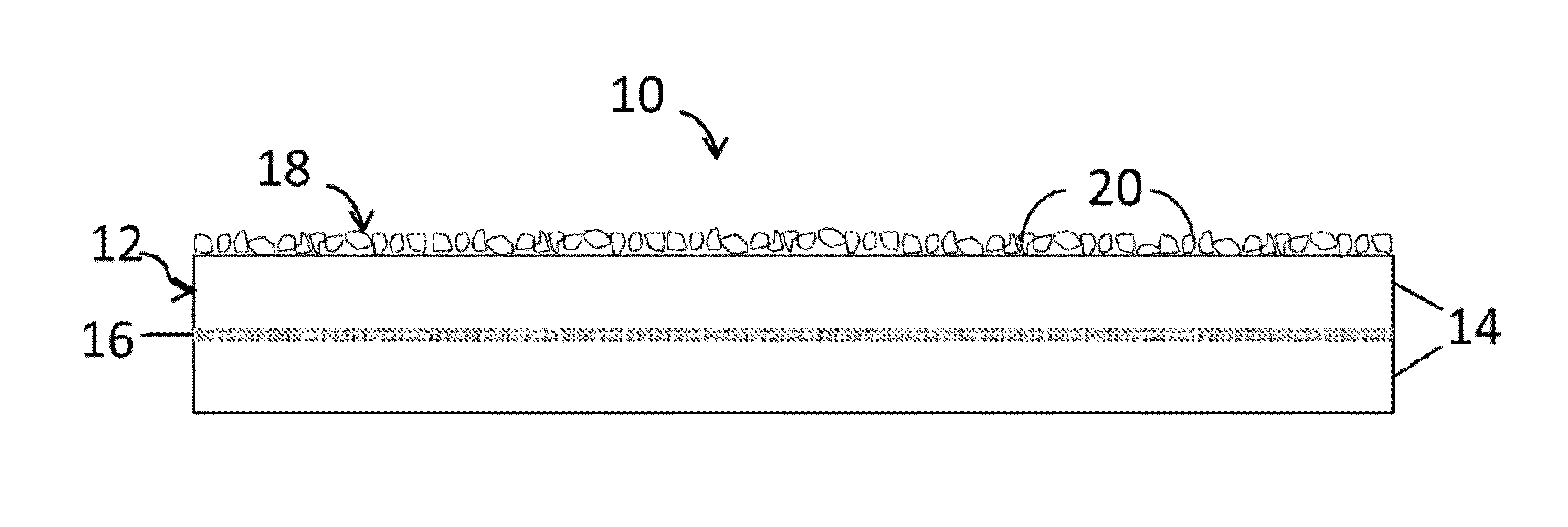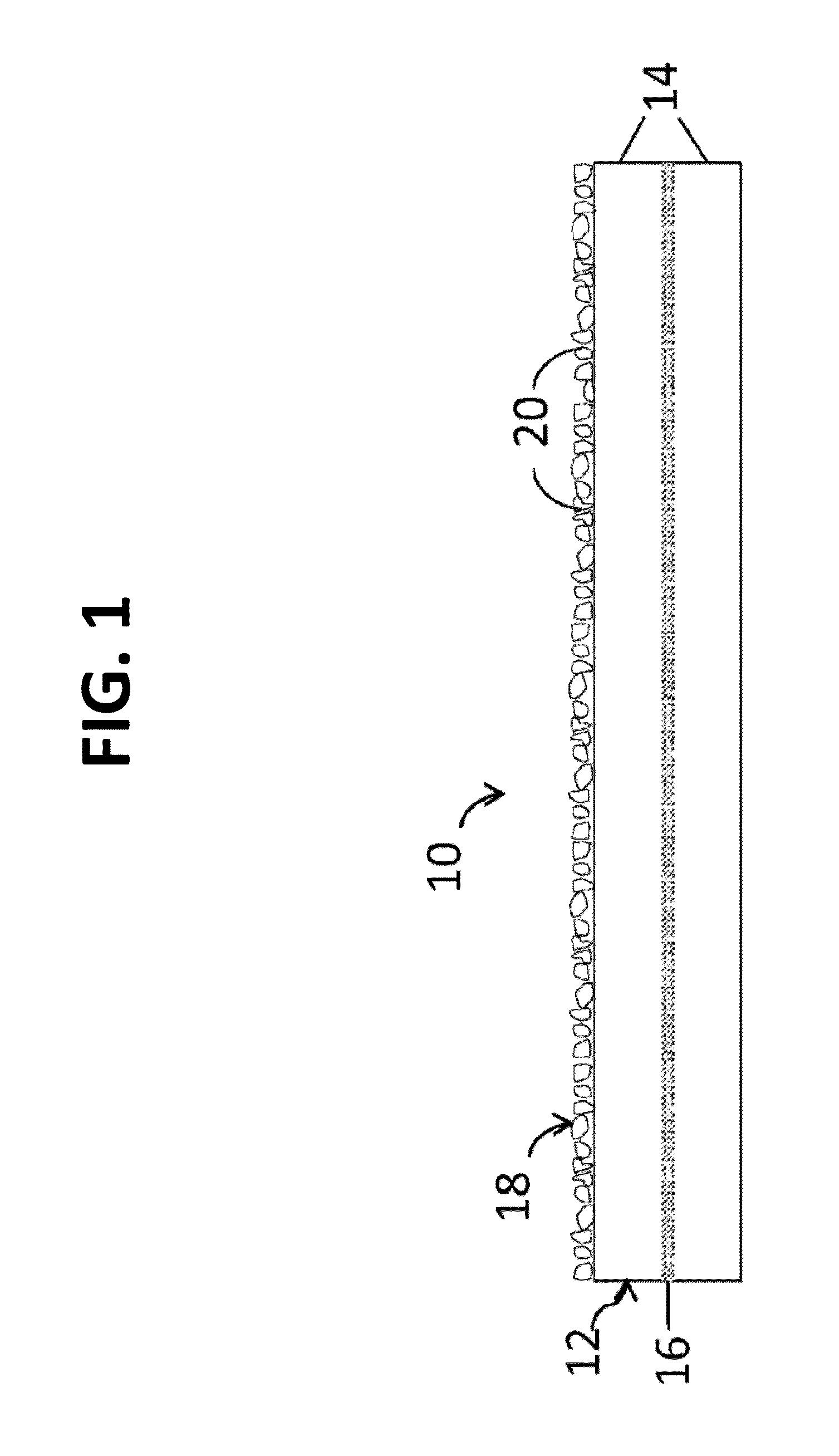Highly reflective microcrystalline/amorphous materials, and methods for making and using the same
a microcrystalline/amorphous material, high-reflective technology, applied in the direction of optical elements, instruments, transportation and packaging, etc., can solve the problems of increasing energy demand, air pollution, heat-trapping greenhouse gas emissions of power plants, increasing energy demand, etc., to increase the albedo of a surface and mitigate urban heat island effects
- Summary
- Abstract
- Description
- Claims
- Application Information
AI Technical Summary
Benefits of technology
Problems solved by technology
Method used
Image
Examples
example 2
Precipitated Pigment Example 2
[0177]Reaction 7 was precipitated by mixing 62.92 g MnCl2 into 1 L of water and 84.01 g NaHCO3 into another liter of water. Then NaHCO3 solution was poured into CaCl2—MnCl2 solution with magnetic stirring and kept for 1 hour. The rose red precipitates were Buchner-filtered and the filtered slurry was initially dried using paper towels and then dried overnight under ambient condition.
Precipitated Pigment Example 3
[0178]In reaction 8, 98.59 g CaCl2 and 6.72 g CuCl2 were dissolved in 1 L of water, and 84.01 g NaHCO3 was separately dissolved in 1 L water. The NaHCO3 solution was poured into CaCl2—CuCl2 solution and the mixture was mixed with a magnetic stirrer for 1 hour. Then the blue precipitates were Buchner-filtered and the filtered slurry was initially dried using paper towels and then dried overnight under ambient condition.
example 4
Precipitated Pigment Example 4
[0179]Reaction 9 was precipitated by dissolving 67.23 g CuCl2 into 1 L of water and 84.01 g NaHCO3 into another liter of water. Then NaHCO3 solution was poured into CaCl2—CuCl2 solution with magnetic stirring and kept for 1 hour. The green precipitates were Buchner-filtered and the filtered slurry was initially dried using paper towels and then dried overnight under ambient condition.
[0180]These resulted in variously colored carbonate precipitates. Reaction 6 was light red, and Reaction 7 was rose / red. Reaction 8 produced a blue / green product and Reaction 9 produced a green product.
2. Manufacture of Albedo Enhancing Materials from Precipitate
[0181]a. Ceramic Samples
[0182]Precipitated powders were pressed to densify and observe reactions that may take place during the powder pressing process. Coupons were composed of 6-11 grams of powders (depending on volume of respective powders) and hydrated with 10 wt. % of a liquid phase to aid and / or promote any po...
example 1
Curing Example 1
[0195]As an example, sample 69, which originally consisted of ACC, transformed into calcite when cured in 1M Na2CO3 solution, while it transformed to aragonite in seawater. FTIR spectra comparing the original S69 and S69 cured in 1M Na2CO3 clearly indicated the formation of calcite by appearance of representative calcite peak at 713 cm−1 after 4 days. Curing Example 2: As a comparison, S69 cured in seawater shows a completely different result, as peaks specific to aragonite at 853, 713, and 700 cm−1 continues to grow for 7 days. A possible reason for the diverging result is that high pH in Na2CO3 solution stabilizes the metastable ACC and amorphous vaterite precursor / anhydrous amorphous carbonate to calcite, and different kinds of cations and organic compounds induced transformation into aragonite in seawater as they inhibit calcite formation. For instance, past studies show evidence that the presence of Mg2+, Fe2+, and dissolved organic carbons (DOCs) inhibit calcit...
PUM
| Property | Measurement | Unit |
|---|---|---|
| Pressure | aaaaa | aaaaa |
| Alkalinity | aaaaa | aaaaa |
Abstract
Description
Claims
Application Information
 Login to View More
Login to View More - R&D
- Intellectual Property
- Life Sciences
- Materials
- Tech Scout
- Unparalleled Data Quality
- Higher Quality Content
- 60% Fewer Hallucinations
Browse by: Latest US Patents, China's latest patents, Technical Efficacy Thesaurus, Application Domain, Technology Topic, Popular Technical Reports.
© 2025 PatSnap. All rights reserved.Legal|Privacy policy|Modern Slavery Act Transparency Statement|Sitemap|About US| Contact US: help@patsnap.com



